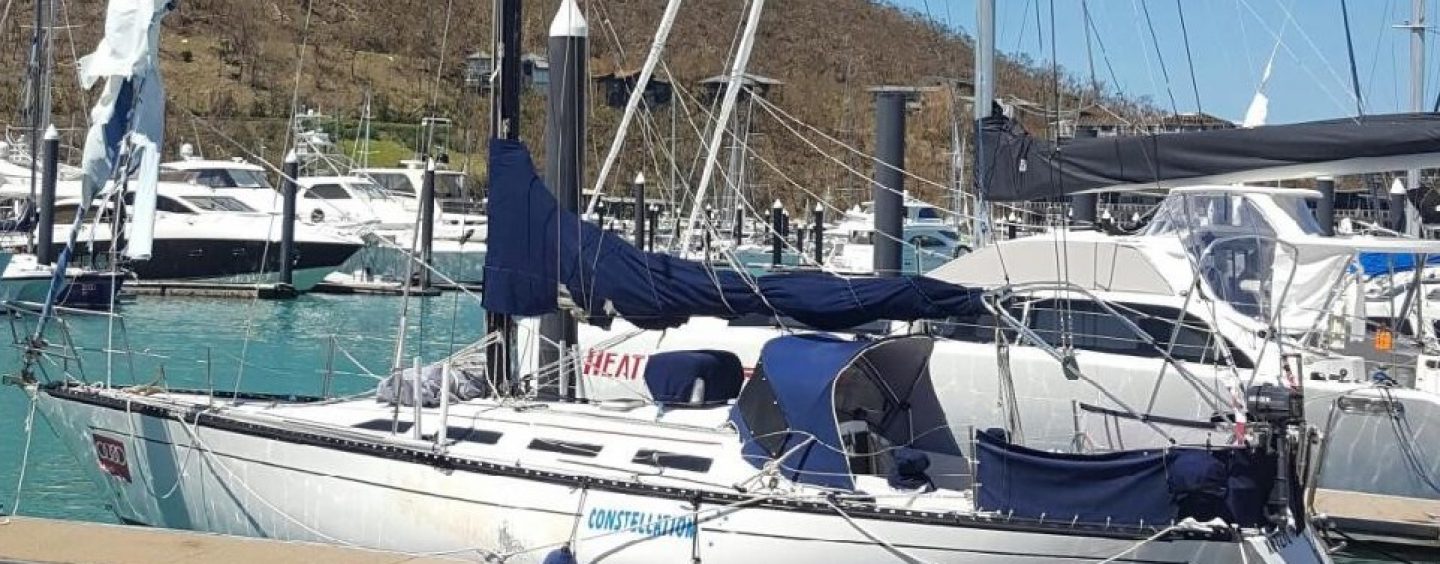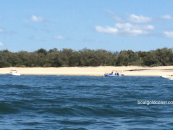Regardless of where you live, you can expect to be hit with severe weather once in a while. Whether it’s some wilder winds hitting the region or a highly destructive cyclone, the following methods are a must for storm protection. In 2017, we were reminded of the magnitude of power nature can bestow on us with the destructive events in North Queensland and the Caribbean. Let’s take a little recap and review what you, as a responsible boatie, can do in these unpredictable situations.
CYCLONE DEBBIE
In 2017, Cyclone Debbie hit the north coast of Australia and left significant amounts of damage. Boaties particularly felt the effects of the storm, with their vessels, marinas and waters all impacted. The Pantaenius team were amongst the first insurance representatives to see the affected areas, travelling up to Airlie and Hamilton Island, where Debbie hit the hardest. We saw the damage first hand and we worked with our insured over the next 18 months to resolve all claims.
In short, cyclone Debbie’s aftermath was significant. This natural disaster turned lives upside down, resulting in the affected boat owners having to spend many months rebuilding their assets and lives.
Being at the scene, ready to assess the damage, and assist our fellow boaties, we were confronted with the lot. Many things were quite shocking to see, but what we were very taken back by was how little preparation some clients had done. With the knowledge of Debbie’s presence and movement five days prior to her arrival, we had expected much more effort to protect their assets.
Many used the excuse of living in the southern states, or that they simply ‘didn’t know,’ both invalid excuses. There were plenty of people on the ground that could prepare your boat if you could not. You see, at the end of the day, there is a responsibility that lies squarely with you, the insured. Your insurer is in partnership with you; but in reality, would you expect a partner to remain beside you if you were negligent? The notion that insurance will take care of it all is not entirely correct. In the partnership, you do have responsibilities. They stem from basic seamanship, and are referred to in most marine Product Disclosure Statements (PDS).
We have had the chance to check in with a few of our affected clients months after the cyclone. Some of them noted that they were still completing repairs and replacements over a year later due to the huge waiting lists for slipping at their local and affected marinas.
IMPACT OF HURRICANES IRMA, JUAN AND MARIA
On a more heartfelt note, the consequential damage of these tragic events can really leave a whirlwind of emotion. Our good friend, Nic Douglas, experienced this at the forefront, visiting various islands in the Caribbean directly after their catastrophic events in 2017. With our support, she was placed on the very first plane leaving the US heading to the affected islands. Alongside surveyors and support crew, Nic, along with the Pantaenius team, spent the next two weeks right amongst the devastation.
Nic commented, “The scene looked like a garbage tip (Beef Island).” It was a vast contrast to the tropical atmosphere the region is known for. The captain of the British Commandos, who had been on the islands for the past weeks, remarked that the aftermath of Hurricanes Irma, Juan and Maria were comparable to the scenes he experienced in Vietnam. “It was a warzone!”
What we found was the most striking characteristic of the Caribbean, post the catastrophe, was the positivity encircling the scene. With houses ripped apart, schools swallowed up and boats stacked atop of one another, there was still such a great sense of hope amongst the affected. The desire to come back from the event and be ready for the next season truly prevailed within the communities. From speaking to many individuals, it was concluded that visiting those in need and showing you care far outweighs any monetary assistance. A friendly face and offering of help goes a long way in times of trauma.
PREPARING FOR STORM SEASON
There is plenty of reading material out there about how to prepare for these events because they aren’t exactly uncommon. Here at Pantaenius, there are some basic procedures we follow and encourage others to take on board to ensure possible damage is minimised.
• Double up on all lines
Use extra line to double up the spring and bow lines. Make sure the lines are in good condition and are of appropriate size. Position slip lines so that they reach higher up on the pilings. This aids in keeping the boat in place when the weather hits, and the water level rises.
• Strip away canvas and sails
Remove all sails and remove all sail covers, dodgers, enclosures, Bimini, etc. Don’t leave any canvas products on your vessel. Remove any windage that could cause the boat to ‘sail’ during hasty winds.
Take this sailing gear off the vessel.
• Remove – or sink – dinghies
Clear the deck of dinghies! If you have a hard dinghy, then take it home with you or pull the boat plug and sink it in shallow water to shield it from potential damage. Dinghies must NOT be left on davits.
• Hang out extra fenders
Put out extra horizontal fenders onto pilings and the hull where contact can be expected. If moored stern first, then hang vertical fenders across the stern. Extra vertical fenders should also be hung on the side next to finger piers. Make sure fenders are of suitable size and are in good condition. Deflated fenders are of no value.
• Add chafing gear
Synthetic docking line has elasticity that allows it to spring back and forth when under pressure. This action combined with the presence of sharp chocks can see an anchor or dock line completely cut through. To avoid this, use sandpaper to smooth the edges of chocks. Furthermore, use rags, canvas, split hose or PVC tubing where it passes over a rub rail/toe rail or through a chock.
• Seal the seacocks
Shut off all seacocks (turning the handle perpendicular to the hose). This includes the head intake, sink and shower drain, engine raw water intake, and head overboard discharge seacocks. The EXCEPTION to this is the cockpit drain seacocks, which drain rainwater.
• Batten and tape hatches
Secure all hatches and opening ports, and tape around the inside edges for extra protection against water intrusion.
• Secure electronics, charge batteries, check pumps
Shut down and, if possible, disconnect all the electronic equipment. This will save the electronics in the event of a lightning strike, which is not uncommon with tropical storms. Besides the bilge pumps, ensure batteries are fully charged to run the pumps. Test the float switch on each bilge pump by lifting the float switch tab that should cause the pump to start within a few seconds.
• Anchoring
When anchoring in the mangroves, use as many anchors and lines attached to the mangroves as possible. Make sure all lines are of suitable size and are in good condition.
Following these guidelines can really reduce the impact that wild weather can have on your boat and your wallet. Furthermore, it will minimise the potential damage to the property of others. Overall, the simple but effective approaches to securing your vessel can truly make a difference in preventing its damage whilst also helping you comply with the agreement you have with your insurer.
Have a safe and happy season!
By Pantaenius Insurance



























